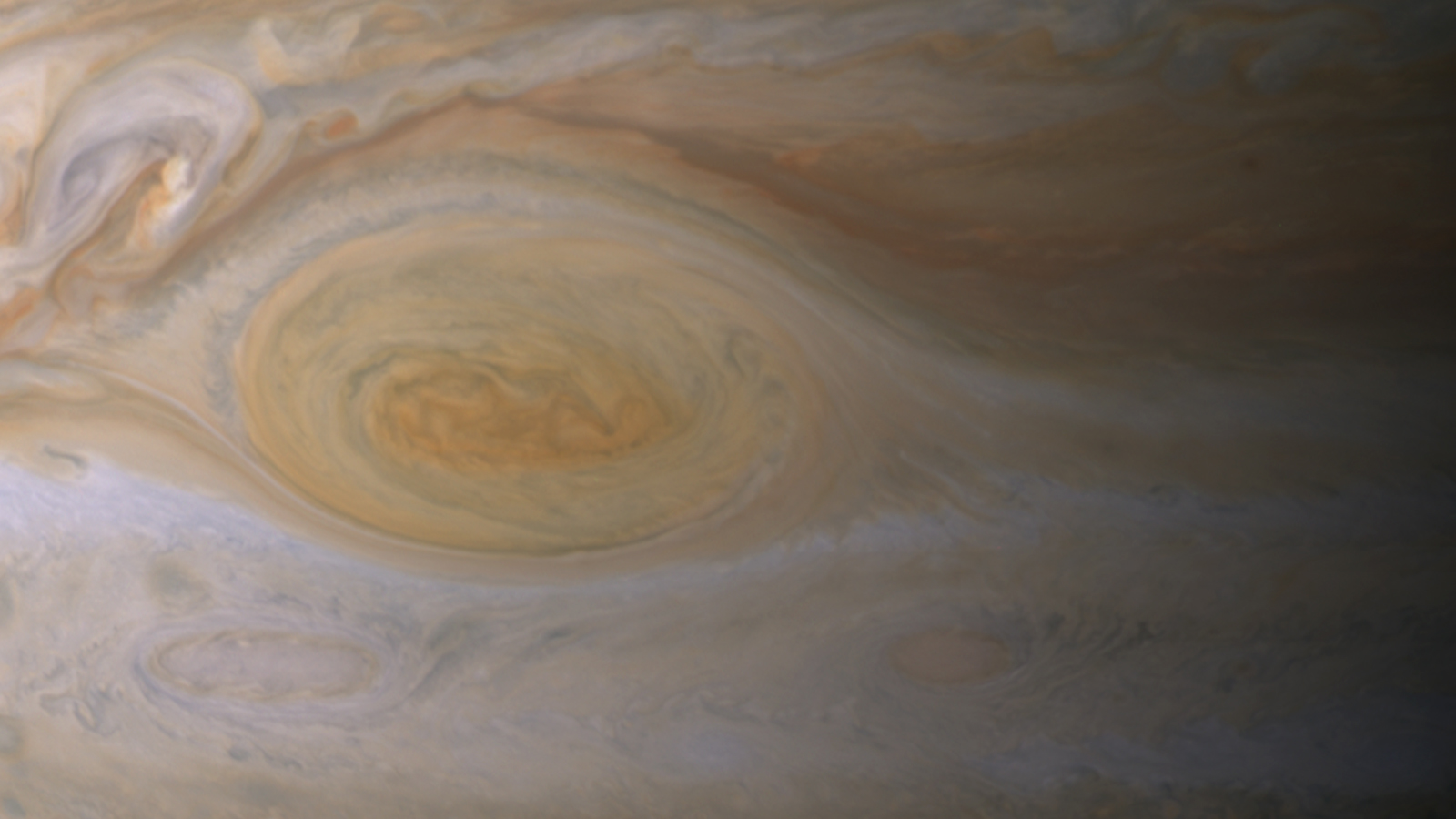Color of Jupiter's Great Red Spot Comes from Epic Sunburn

The Great Red Spot on Jupiter's face is secretly dull in color. But the swirling storm looks crimson thanks to something like a cosmic "sunburn," scientists say.
New experiments show that the gases in the upper atmosphere of Jupiter turn a reddish hue when they're hit with sunlight. Underneath, the Great Red Spot probably looks gray or white.
"Spot" might be a bit of a misnomer for the most powerful storm in the solar system. The vortex is wider than two Earths, at about 7,500 miles (12,000 km) across, and it packs winds up to 425 mph (680 km/h). The storm is also extremely long-lived; it has been present on Jupiter ever since astronomers started observing the planet through telescopes, making it centuries old at least. [Jupiter's Great Red Spot in Photos]
Scientists were treated to incredibly detailed views of Jupiter and its big spot when NASA's Cassini spacecraft flew past the giant planet in December 2000. Cassini has since moved on and is currently in orbit around its main destination, Saturn. But data from the probe's Jupiter flyby inspired Cassini scientists at NASA's Jet Propulsion Laboratory, Pasadena, California, to figure out what makes the Great Red Spot red.
In the lab, the researchers created clouds of ammonia and acetylene gases to mimic the clouds in the upper reaches of Jupiter's atmosphere. They blasted these chemicals with ultraviolet light to simulate the sun's effects. This produced a reddish material, which had the same light-scattering properties as the Great Red Spot, the researchers said.
"Our models suggest most of the Great Red Spot is actually pretty bland in color, beneath the upper cloud layer of reddish material," Kevin Baines, a Cassini team scientist, said in a statement from NASA. "Under the reddish 'sunburn' the clouds are probably whitish or grayish."
At first, Baines and colleagues thought the red color might be produced by the breakdown of ammonium hydrosulfide, the chemical that makes up one of Jupiter's main cloud layers. But in the lab, this substance turned bright green when hit with UV light. After that mismatch, they tested which combinations of ammonia with hydrocarbons would produce the best fit for the Great Red Spot. It turned out to be ammonia and acetylene, the researchers said.
Get the Space.com Newsletter
Breaking space news, the latest updates on rocket launches, skywatching events and more!
Baines presented the findings this week at the American Astronomical Society's Division for Planetary Science Meeting in Tucson, Arizona.
Follow Megan Gannon on Twitter and Google+. Follow us @Spacedotcom, Facebook or Google+. Originally published on Space.com.
Join our Space Forums to keep talking space on the latest missions, night sky and more! And if you have a news tip, correction or comment, let us know at: community@space.com.

Megan has been writing for Live Science and Space.com since 2012. Her interests range from archaeology to space exploration, and she has a bachelor's degree in English and art history from New York University. Megan spent two years as a reporter on the national desk at NewsCore. She has watched dinosaur auctions, witnessed rocket launches, licked ancient pottery sherds in Cyprus and flown in zero gravity on a Zero Gravity Corp. to follow students sparking weightless fires for science. Follow her on Twitter for her latest project.









